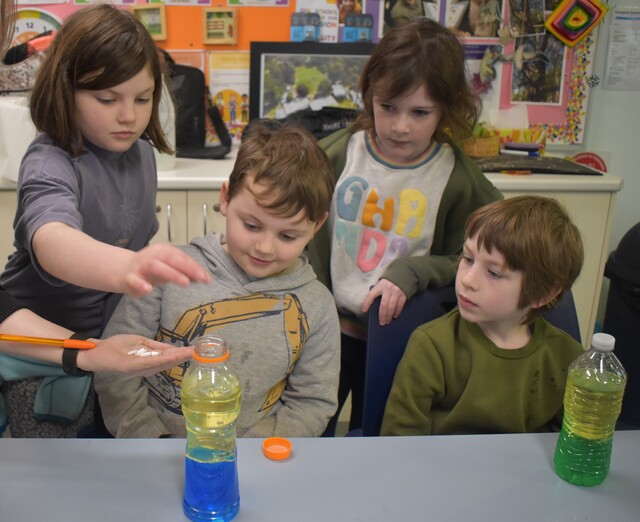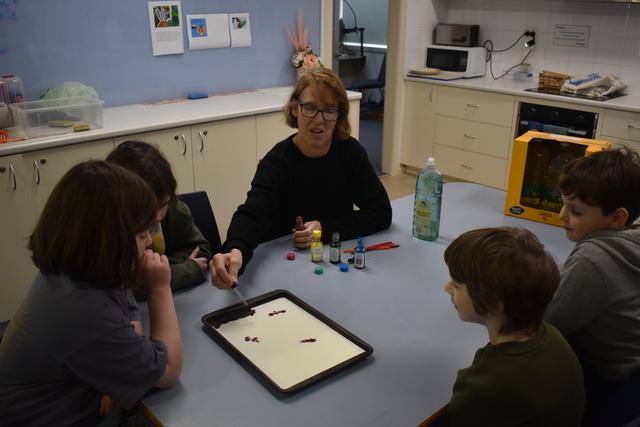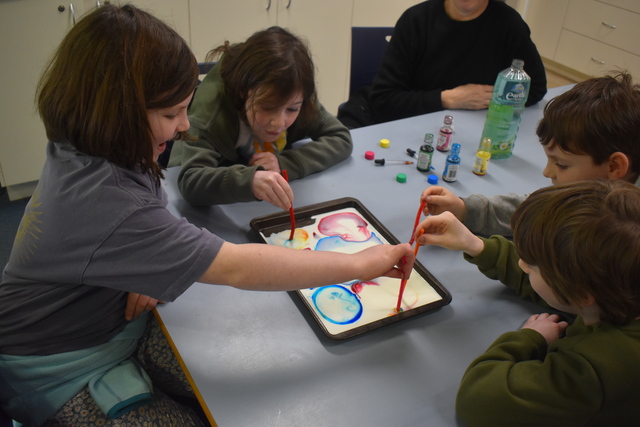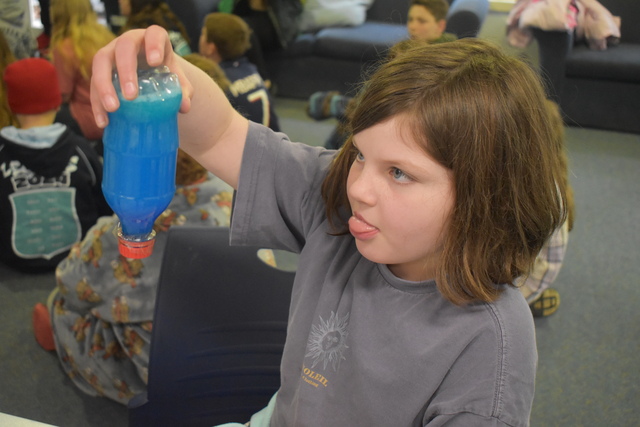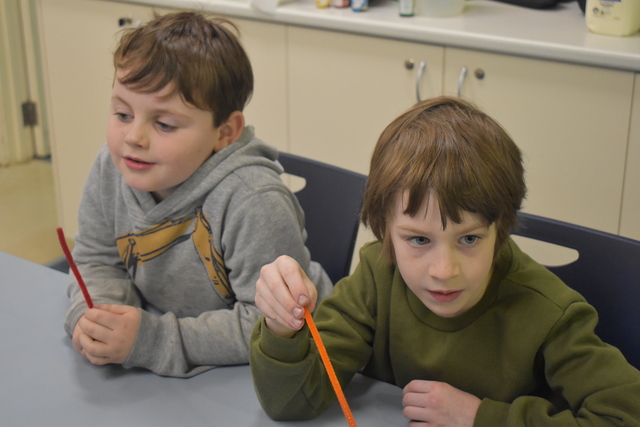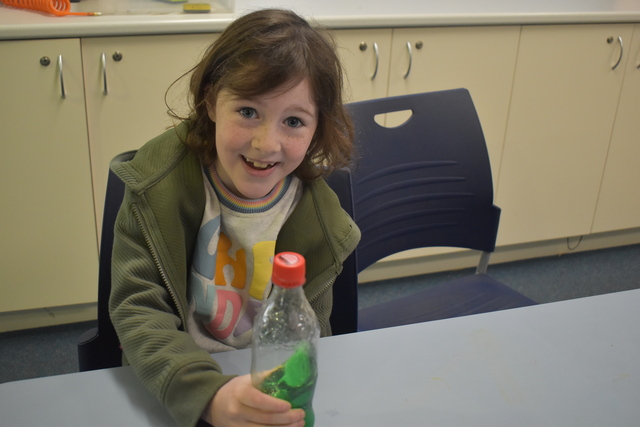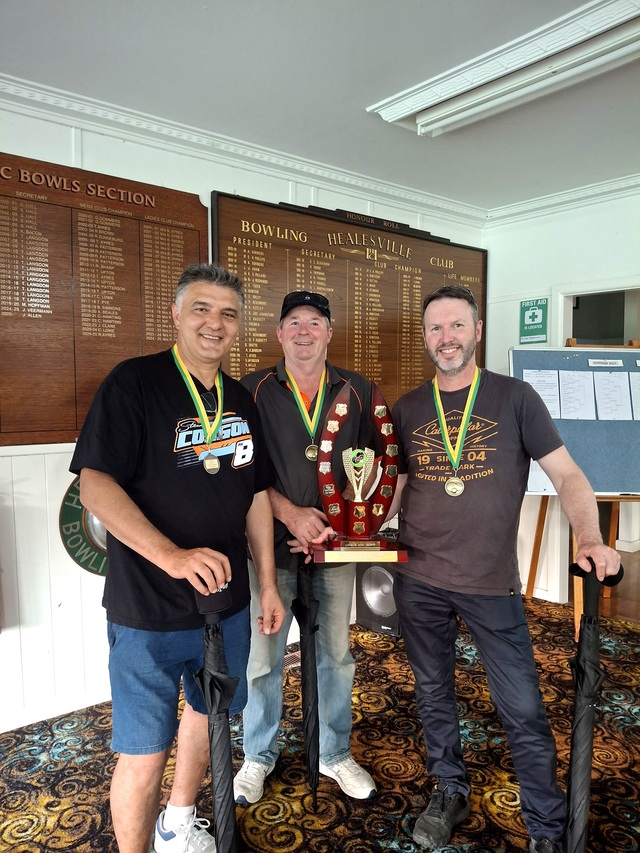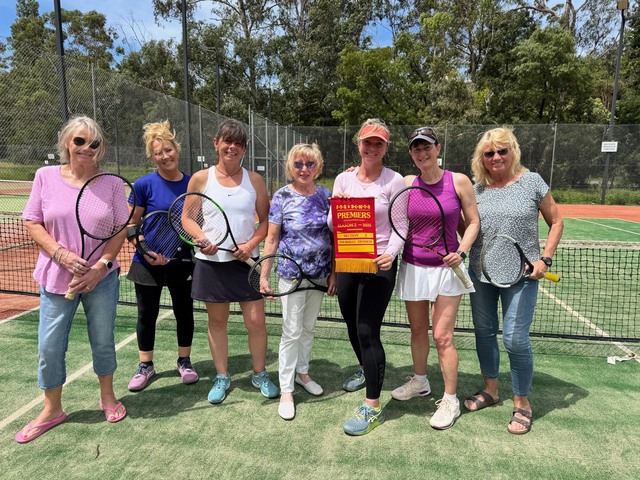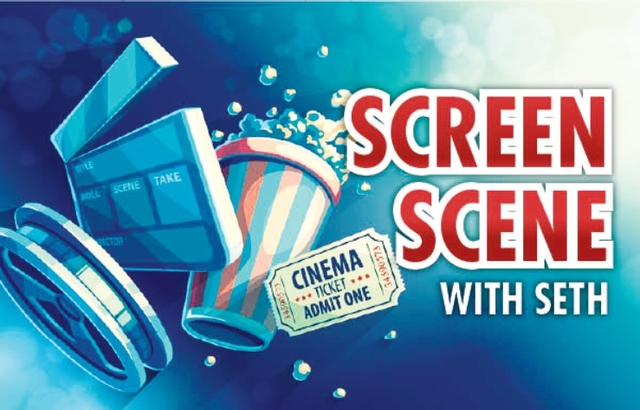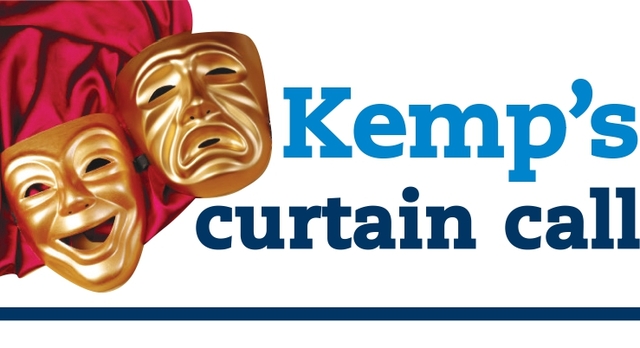Chum Creek Primary School juniors had fun hands-on experiments on Friday 16 August and Wednesday 21 August to celebrate National Science Week, which was placed between 10 and 18 August.
The students got themselves immersed in science through a number of activities they did with their teacher.
The main event was on Friday 16 August while the Wednesday one was set up for two students who missed the Friday event.
Junior teacher Ann Hosking said having hands-on experiments is important for students because it gets them to think rather than for teachers to provide all the information.
“It provides opportunities for the students to become curious, to ask questions, to make predictions and then to try and work out why what happened,” she said.
“The students were keen to share their observations with each other.
“It was great to see their excitement as they watched to see what did occur.”
At the Friday event, juniors participated in activities using air rockets, toy parachutes, magnets and engineering kits.
Ms Hosking said the students discussed a wide range of science such as zoology and biology throughout the day while having hands-on experiments.
“We put the Skittles in warm water and all the dye of the Skittles came out and made a beautiful pattern,” she said.
“We had a paper towel activity to see how it can soak from one cup of water with one colour to the other colour and how it chases up the paper and joins and makes a rainbow.
“Another one we did was the shaving cream activity. We had water and shaving cream on the top, and we dropped coloured dye on the shaving cream which gradually soaked through and made it look like rain coming from the cloud.”
Grade 2 student Bea brought her own experiment which she had done at home.
Bea initiated the activity with vinegar and the bicarbonate soda and wanted to run that with her friends.
She brought in a tray and put bicarbonate soda on the base.
Then in little squirter bottles, she had vinegar and added different food colourings.
The young scientist got her group to squirt the coloured vinegar onto the base and it would make little volcanoes as they erupted turning the white soda into a bubbling coloured pile.
“It would all fizz off its colour because bicarb soda and vinegar have a chemical reaction,” Bea said.
Three Grade 2 students, Luna, Bea and Quinn, and one preppie August participated in the Wednesday event.
They did two experiments.
One was to see how detergent reacts when it meets fat, and the other one was to see how oil and water react to each other and how to mix them together.
They put milk on a tray and put some colour dyes in the milk.
As soon as the students put their pipe cleaners with detergent on them near the colour dyes in the milk, the colour dyes moved away.
“Detergent does not like fat. It repels from it,” Ms Hosking said.
“If there was no colour dye in it, you wouldn’t see it.”
For the next activity, the four juniors put water, a colour dye and oil in a plastic bottle.
They could see there were two layers in it and realised oil and water couldn’t mix with each other.
When they put Alka Seltzer in their bottle, they could see the liquid start to bubble and mix up.
“It looks like a volcano,” Luna said.
When August put his hand on top of the bottle, he said he couldn’t feel any gas or air coming out from the liquid.
When Star Mail asked the kids how they found the activities, Quinn said they were “incredible and amazing”.
Chum Creek Primary School principal Michael Corr was glad to see his students enjoy the special activities.
Mr Corr said science education plays an important role in helping the children develop teamwork, curiosity, communication, critical thinking, problem solving and logical thinking skills.
“These skills aren’t just important for science class, they are skills that students will use throughout their school and working lives. A science education in primary school will continue to benefit students for decades to come,” he said.
“At Chum Creek Primary School, we maximise our student’s learning by utilising our natural environment to encourage unstructured, cooperative outdoor play. Our students love building cubbies.
“We are also lucky enough to have a variety of wildlife living in and around our schoolgrounds. Apart from various birds including rosellas, cockatoos and kookaburras we have also recently had a bowerbird nesting in our schoolyard.
“We have also hosted possums, microbats, kangaroos, echidnas, wombats and lizards at different times.”

